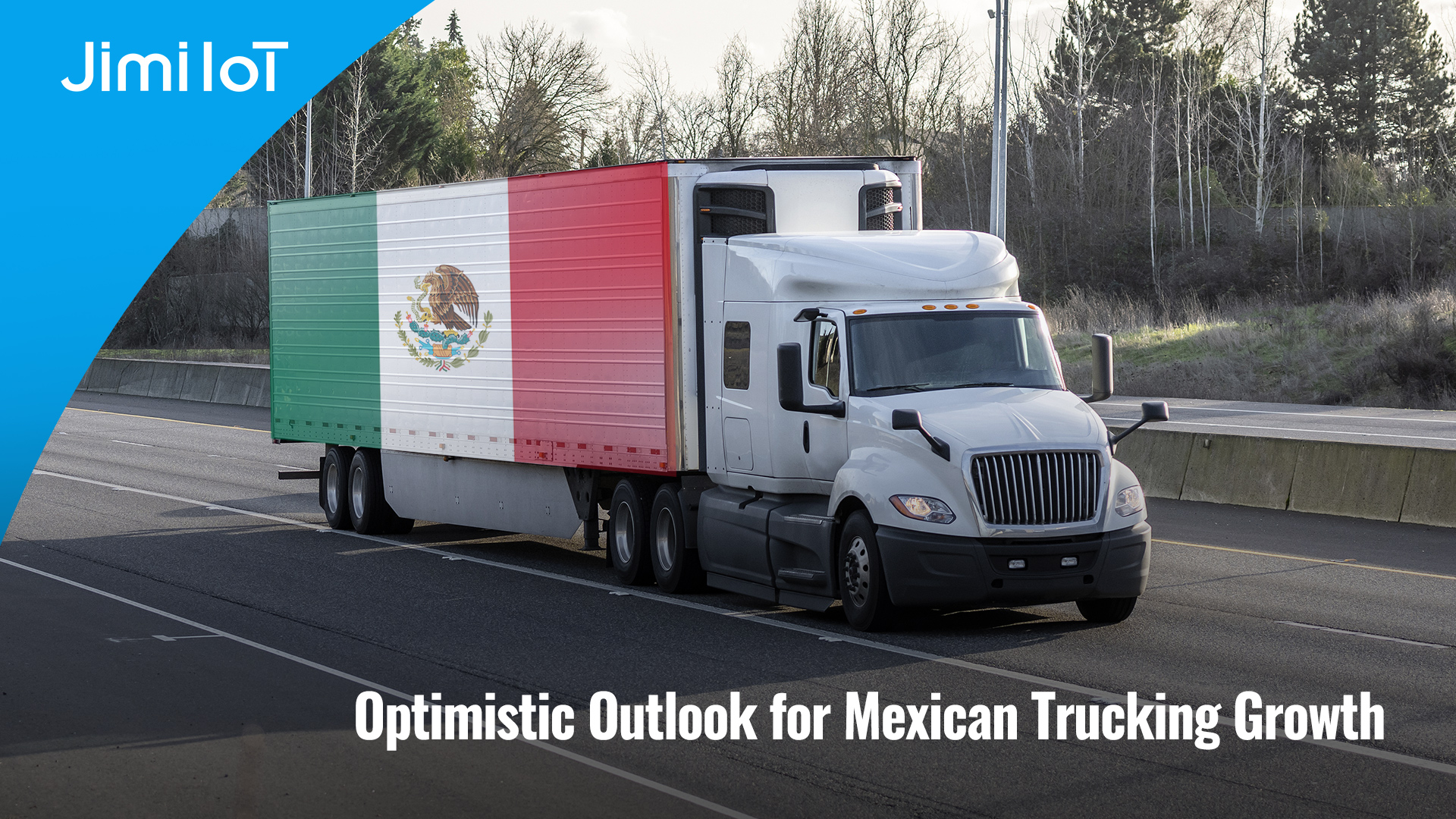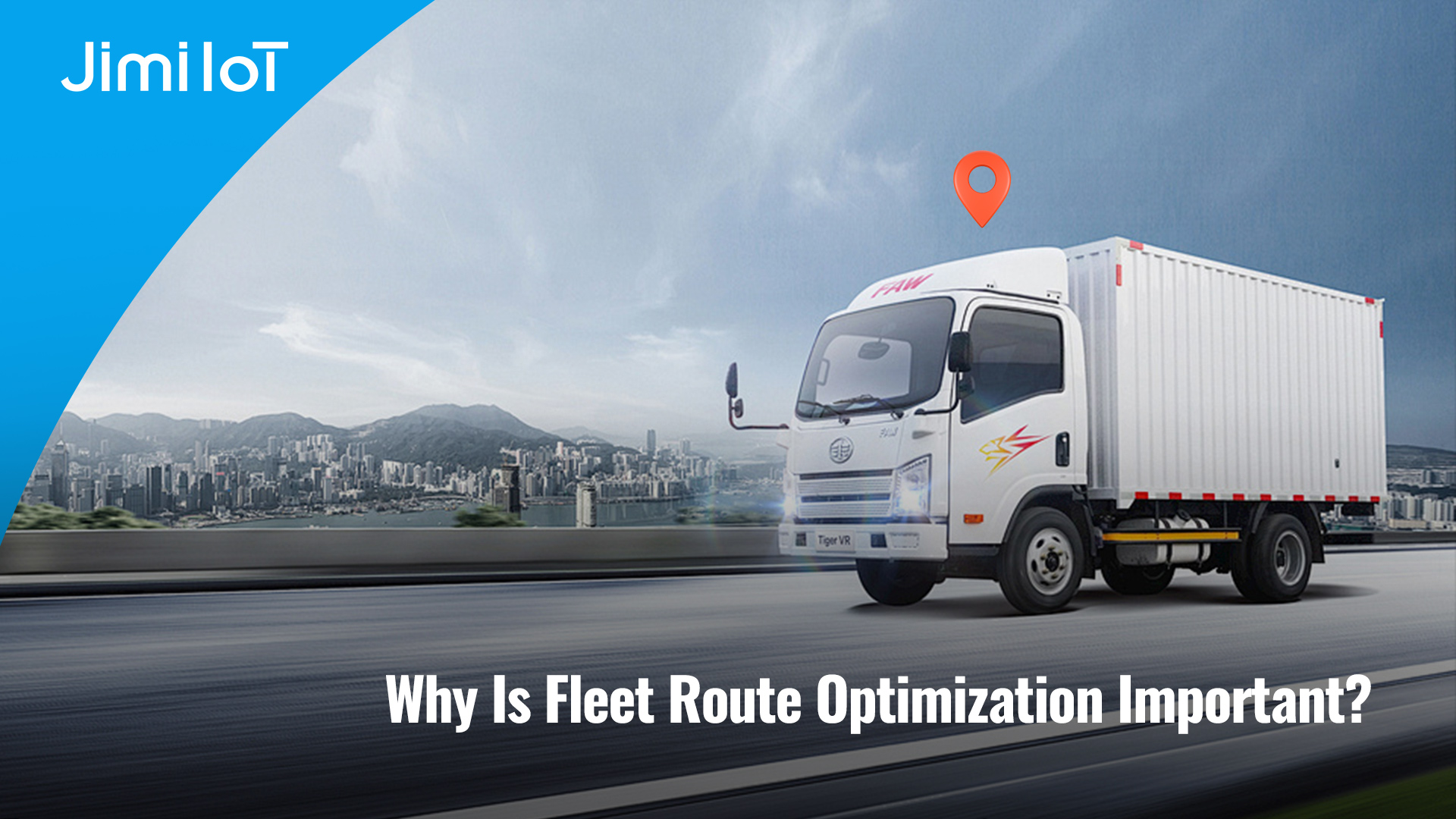Introduction
The year 2024 marked a historic peak for Mexican trucking freight, driven by a surge in cross-border trade, particularly between Mexico and the United States. With a 10% year-over-year increase in truck freight, Mexican trucking is poised for continued growth into 2025. The dynamic border region, particularly in places like Laredo, Texas, has become a vital trade corridor, with nearshoring activities and significant foreign investment pushing the demand for trucking services higher. However, to sustain this growth, one technology stands out in its ability to ensure smooth operations, enhance safety, and reduce costs: GPS tracking.
The U.S.-Mexico Border: A Key Trade Corridor
In recent years, the U.S.-Mexico border has become one of the most crucial trade corridors in North America. Mexico’s truck freight has surged, driven primarily by electronics, computers, and automotive imports. Laredo, Texas, which handles nearly 40% of all U.S.-Mexico road imports, has seen record growth, including a 28.5% increase in Christmas imports in 2024. As U.S. companies continue to shift manufacturing from China to Mexico, the demand for trucking services at the border is expected to increase significantly.

This shift is largely due to the trend of nearshoring, where U.S. companies relocate their supply chains closer to home. As major investments pour into Mexico, it’s transforming the country into a global supply chain hub. The Mexican government’s plan to attract $277 billion in foreign investments between 2025 and 2030 is set to fuel further growth, creating more opportunities for cross-border trucking.
However, while the outlook remains positive, this growth also presents logistical challenges. To keep pace with this demand and handle the complexities of cross-border transportation, trucking companies must rely on advanced technologies to ensure efficiency, security, and compliance. GPS tracking
Why GPS Tracking Is a Game-Changer for Cross-Border Trucking
The rise in cross-border freight underscores the need for smarter, more efficient logistics solutions. The rapid increase in trucking volumes through the U.S.-Mexico border makes it clear that traditional logistics management tools can no longer keep up. GPS tracking, once seen as an optional luxury, has now become a critical technology for fleet management, offering immense value to both trucking companies and their customers.
Real-Time Visibility and Enhanced Security
In an industry as fast-paced and complex as cross-border trucking, real-time visibility is essential. GPS tracking systems provide fleet managers with up-to-the-minute information on the location, speed, and status of trucks as they move across the U.S.-Mexico border. This allows managers to track shipments, monitor progress, and adjust routes as needed, ensuring goods reach their destinations without delays. This level of visibility also facilitates real-time decision-making, making it easier to anticipate potential challenges such as traffic congestion, accidents, or border delays.
The security benefits of GPS tracking cannot be overstated. Cross-border transportation, especially in high-traffic areas like Laredo, comes with significant risks, including cargo theft and hijacking. GPS tracking allows fleet operators to monitor the location of their vehicles and receive instant alerts if a vehicle deviates from its planned route or if there are long periods of inactivity. This added layer of security not only prevents theft but also ensures that drivers are safe and that goods are protected at all stages of the journey.
Optimizing Routes and Improving Fuel Efficiency
One of the primary advantages of GPS tracking is the ability to optimize routes. Fleet managers can monitor real-time traffic data and adjust routes accordingly to avoid congestion, road closures, or delays at border crossings. This optimization helps ensure that trucks are taking the most efficient paths, reducing travel time and fuel consumption. Given the volatile price of fuel, route optimization is one of the most effective ways to reduce operational costs in cross-border transportation.
Moreover, GPS tracking systems can monitor driver behavior, including speed, braking, and idling times. By using this data, fleet managers can identify areas where fuel consumption can be reduced, such as minimizing idle time or encouraging drivers to follow more fuel-efficient driving practices. These improvements not only reduce fuel costs but also contribute to the environmental sustainability of the fleet.
The Importance of GPS Tracking for Compliance and Regulation
Cross-border trucking is subject to numerous regulations, including customs procedures, safety requirements, and environmental standards. Compliance with these regulations is critical for avoiding fines, delays, or reputational damage. GPS tracking plays a vital role in ensuring compliance by providing detailed records of a truck’s journey. Fleet managers can use GPS data to verify that trucks are following legal routes, adhering to weight limits, and complying with customs protocols.
In addition, GPS tracking helps meet regulatory requirements related to environmental standards, such as emissions controls or fuel usage reporting. By integrating GPS tracking systems with fleet management software, companies can maintain an ongoing record of compliance that is easily accessible for inspections and audits.
Preventing Delays and Managing Border Crossings
One of the most significant challenges in cross-border trucking is managing delays at the U.S.-Mexico border. These delays can be caused by traffic congestion, border inspections, or changes in customs regulations. GPS tracking helps fleet managers stay ahead of these challenges by providing real-time information about border wait times, enabling them to plan and adjust routes accordingly.
For example, if a truck is delayed at the border due to a backup, fleet managers can use GPS data to identify alternative routes or adjust the schedule. Additionally, GPS tracking allows managers to monitor customs clearance times and ensure that the necessary paperwork and documentation are in order. This proactive approach helps reduce the impact of border delays and ensures that goods are delivered on time.
The Road Ahead: Growth with Challenges
Looking ahead to 2025 and beyond, the outlook for Mexican trucking remains optimistic. With the continued growth of nearshoring and the increasing importance of the U.S.-Mexico trade corridor, trucking volumes are expected to remain strong. However, the industry faces ongoing challenges, particularly in light of political uncertainties surrounding trade agreements and tariffs.
The renegotiation of the United States-Mexico-Canada Agreement (USMCA) and potential tariff changes could disrupt the flow of goods across the border. Former President Trump’s recent announcement of a 25% tariff on Mexican and Canadian goods has caused concern, although the tariffs have been temporarily put on hold. Despite these political risks, the long-term outlook for Mexican trucking is positive, with continued foreign investment and the expansion of nearshoring driving demand for cross-border freight.
The key to navigating these challenges and ensuring continued growth in the Mexican trucking industry is the widespread adoption of technologies like GPS tracking. By providing real-time visibility, optimizing routes, enhancing security, and ensuring regulatory compliance, GPS tracking is helping fleet operators meet the demands of a rapidly changing market.
Conclusion
The Mexican trucking industry is poised for continued success, with cross-border freight expected to grow even further in 2025. As the U.S.-Mexico trade corridor becomes increasingly vital to global supply chains, fleet operators must invest in the tools that can ensure the safety, efficiency, and reliability of their operations. GPS tracking technology has emerged as an indispensable tool in achieving these goals. By enhancing visibility, improving security, optimizing routes, and ensuring compliance, GPS tracking is helping Mexican trucking remain competitive and continue its upward trajectory.
In a world where logistics and supply chains are becoming more complex and global, GPS tracking isn’t just a helpful tool—it’s an essential part of the infrastructure that enables the continued growth of the Mexican trucking industry and its integration into the broader North American economy. With GPS technology, the future of cross-border freight is set to be more secure, efficient, and streamlined than ever before.
Why JimiIoT
JimiIoT is a global leader in innovative IoT solutions. We provide cutting-edge hardware and software tailored to enhance efficiency and connectivity. Our range of products includes advanced GPS tracking devices, asset management solutions, smart vehicle dashcams, and telematics platforms. With a focus on technological excellence and customer satisfaction, we empower businesses to optimize operations and gain valuable insights from data-driven analytics. Trust JimiIoT to drive positive change and unlock growth opportunities in the digital age.
If you would like more details, please visit Facebook, LinkedIn, INS, and Twitter pages for further information.
